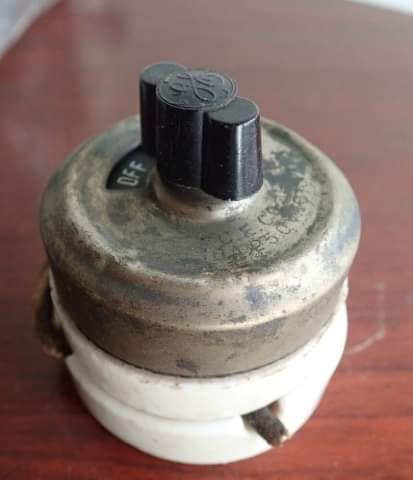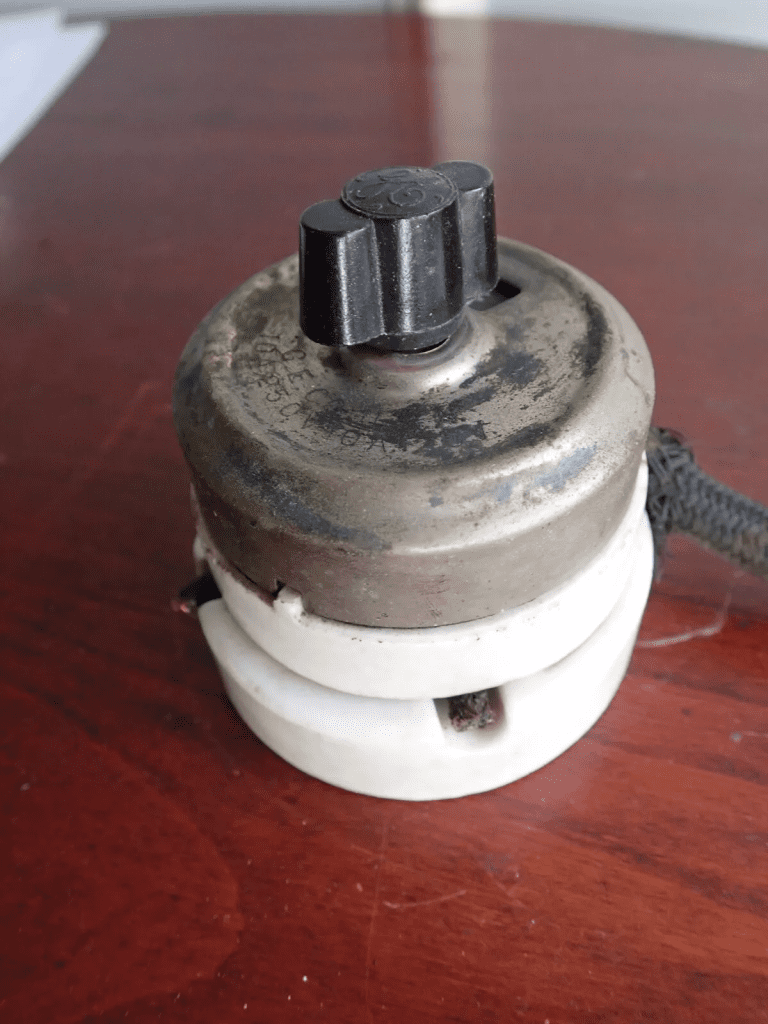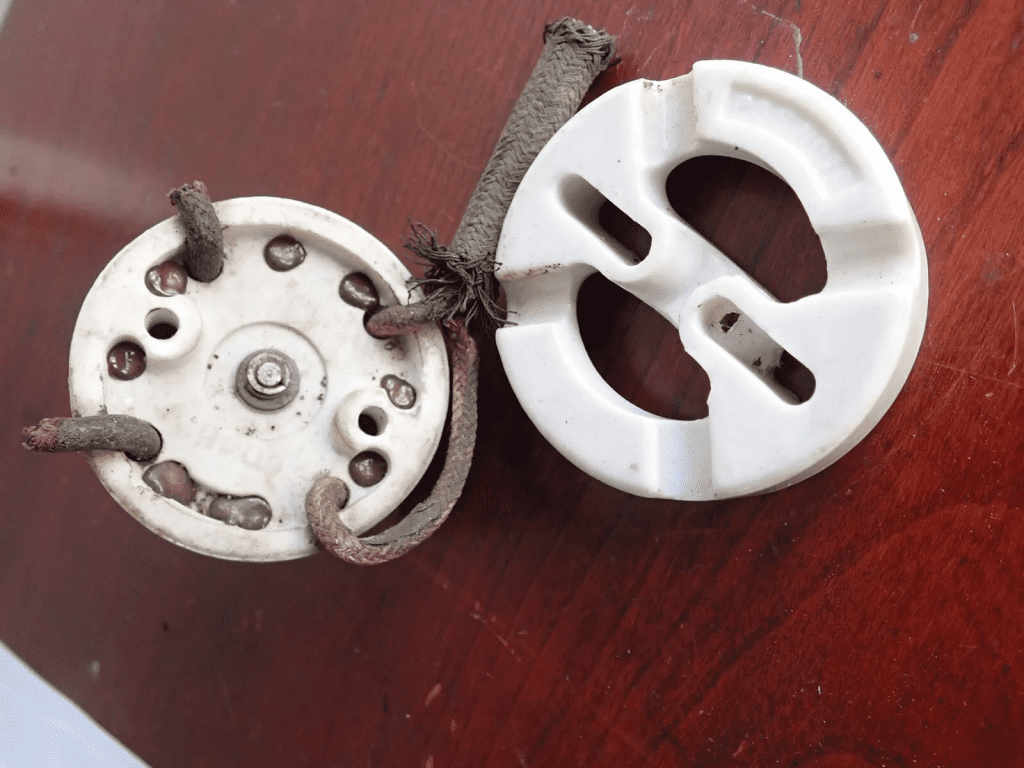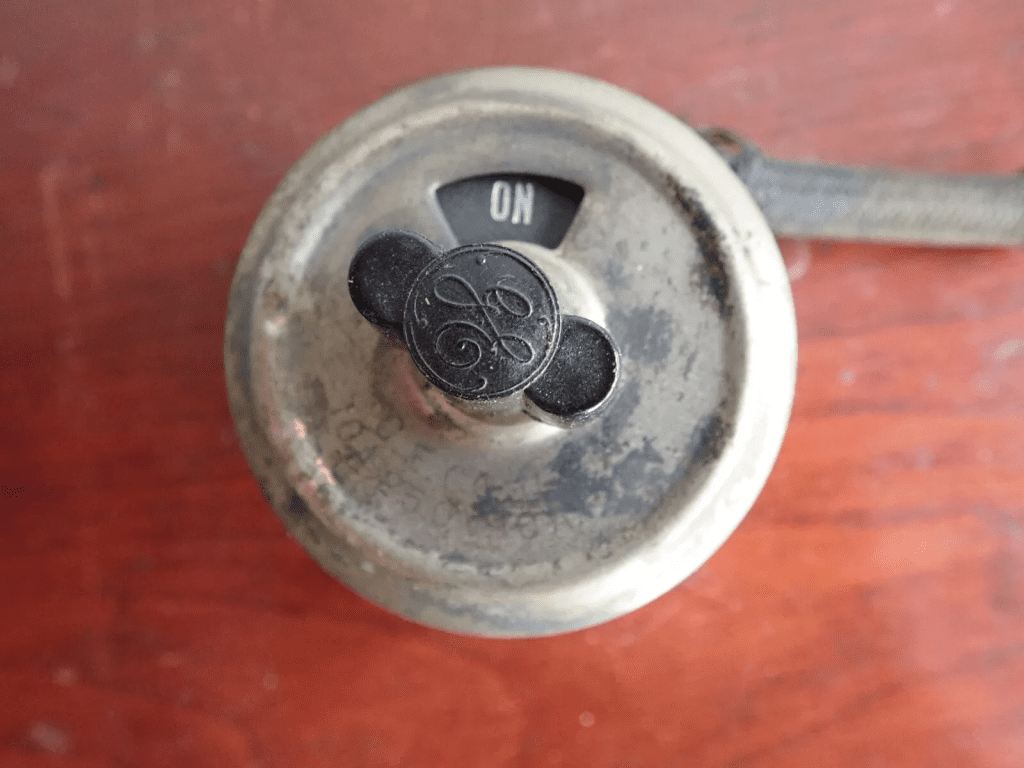In today’s world of sleek, modern light switches, there’s a certain nostalgia attached to the vintage rotary light switches made from porcelain. These switches, which were some of the first to appear in homes, tell a story of how electricity became an integral part of daily life. Not only are they functional pieces of history, but they also embody an era where utility met elegant craftsmanship.
The Birth of Electric Light Switches

When electricity began making its way into homes in the late 19th and early 20th centuries, its primary purpose was lighting. At the time, the first light switches were rotary models. These early switches were both practical and decorative, with porcelain being the most common material for their construction.
Why porcelain? This durable material had several advantages:
- Heat Resistance: Porcelain could withstand the heat generated by electrical connections.
- Moisture and Cold Resistance: It performed well in varied climates, making it ideal for residential use.
- Easy Maintenance: Porcelain was easy to clean and did not discolor, even after years of use.
Porcelain wasn’t the only material used in those early days. Brass, bronze, and even wood were experimented with. However, wood quickly fell out of favor due to fire hazards, leaving porcelain as the safest and most reliable option.
The Elegance of Rotary Switches
Rotary light switches stood out for their simplicity and style. These switches worked by twisting a knob to complete or break the electrical circuit, making them easy to operate. Their design made them a focal point in homes, and the porcelain base often showcased clean, minimalist craftsmanship that complemented the aesthetic of early 20th-century interiors.
As time went on, rotary switches were gradually succeeded by toggle switches, which allowed users to turn lights on and off with a simple flick. Yet, rotary switches retained their charm, and today, they’re often sought after as decorative pieces in vintage-style interiors.
The Rise of Bakelite: A Challenger to Porcelain
By the 1920s, porcelain faced competition from a new material: Bakelite. Invented by Belgian chemist Leo Baekeland, Bakelite is an early form of plastic made from synthetic resin. It quickly gained popularity for its excellent properties:
- High Insulation Resistance: Perfect for electrical applications.
- Heat Durability: Like porcelain, Bakelite could handle high temperatures.
- Cost-Effectiveness: Bakelite was significantly cheaper to produce than porcelain.
Initially, Bakelite was manufactured in dark colors such as black and brown, but its affordability and versatility made it a favorite for interior design during the 1920s and 1930s. By the early 1930s, Bakelite began to phase out porcelain for light switches, although both materials coexisted for a time.
Interestingly, Bakelite light switches also developed a reputation for their vintage appeal. They are now collectors’ items alongside their porcelain predecessors, appreciated for their timeless design and durability.
Surface-Mounted vs. Fitting Installations
In the early days of electricity, all wiring was surface-mounted. Electricity was installed after the construction of homes, and switches and wiring were added externally. By the 1920s and 1930s, fitted installations (where wiring was embedded into walls) became more common, but surface-mounted switches remained prevalent in many homes.

Vintage switches are available in both surface-mounted and fitted styles. Porcelain and Bakelite models can still be found in a range of options:
- White or Black Porcelain: These were popular for both functional and decorative purposes.
- Black Bakelite: A hallmark of early 20th-century design.
- White Duroplast: Known as “white Bakelite,” it offered a modern, clean look.
If you’re considering adding vintage switches to your home, it’s important to note that any replacement or installation work should be carried out by a qualified electrician. Additionally, while twisted textile cables may add to the vintage aesthetic, they are no longer approved for fixed electrical installations due to safety standards.
Why Vintage Porcelain Rotary Switches Still Fascinate Today
There’s something uniquely captivating about vintage rotary light switches, especially those crafted from porcelain. Here’s why they continue to appeal to enthusiasts and homeowners alike:
- Timeless Aesthetic: Their clean lines and glossy finish fit seamlessly into both classic and modern interiors.
- Craftsmanship: These switches were built to last, with durable materials and attention to detail that modern mass production rarely matches.
- Historical Value: Each piece tells a story of a bygone era, making it a conversation starter in any home.
- Functionality Meets Style: Even today, these switches work flawlessly, proving that good design never goes out of style.

For those restoring old homes or creating vintage-inspired interiors, porcelain rotary switches are often the perfect finishing touch. Their nostalgic charm adds a layer of authenticity and character to any space.
Tips for Incorporating Vintage Switches in Modern Homes
If you’re looking to add a touch of vintage elegance to your home with porcelain rotary switches, here are a few tips to get started:
- Pair with Modern Safety Standards: While the switches themselves can be vintage, ensure that the wiring meets current electrical codes.
- Mix and Match Materials: Combine porcelain switches with other vintage materials like brass fixtures or wooden accents for a cohesive look.
- Choose Surface-Mounted for an Authentic Feel: If you want to highlight the vintage aesthetic, opt for surface-mounted switches with visible wiring.
- Consider Reproductions: If authentic vintage pieces are hard to find or too costly, high-quality reproductions are available and offer the same classic charm.
Preserving a Piece of History

Vintage porcelain rotary light switches are more than just functional items—they’re a glimpse into the history of electrical innovation and interior design. Their durability, elegance, and simplicity make them enduring icons of early 20th-century craftsmanship.
Whether you’re restoring a historic property or simply want to add a unique, nostalgic touch to your home, these switches offer a blend of practicality and beauty that’s hard to resist. So next time you encounter one, take a moment to appreciate its history and the story it tells about the evolution of everyday technology.
Conclusion: Celebrating Vintage Design
The journey of vintage rotary light switches—from porcelain to Bakelite—reflects the ingenuity and artistry of a bygone era. These switches remind us that even the smallest details in our homes can be thoughtfully designed and crafted to stand the test of time.
If you’re drawn to vintage aesthetics or simply appreciate the history behind everyday objects, incorporating these switches into your home can be a rewarding way to connect the past with the present. So why not bring a touch of timeless elegance into your space? You might just find that these vintage switches are the perfect blend of form and function.


